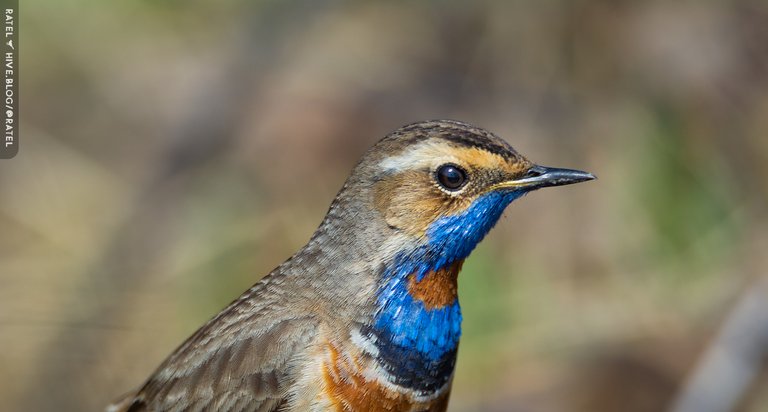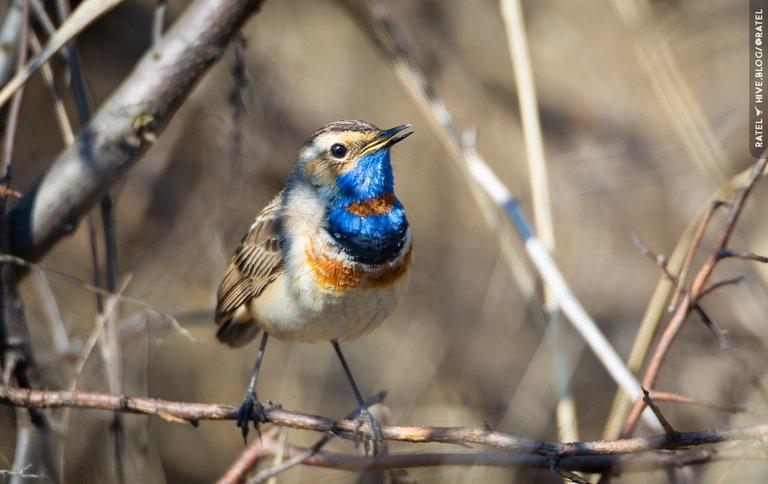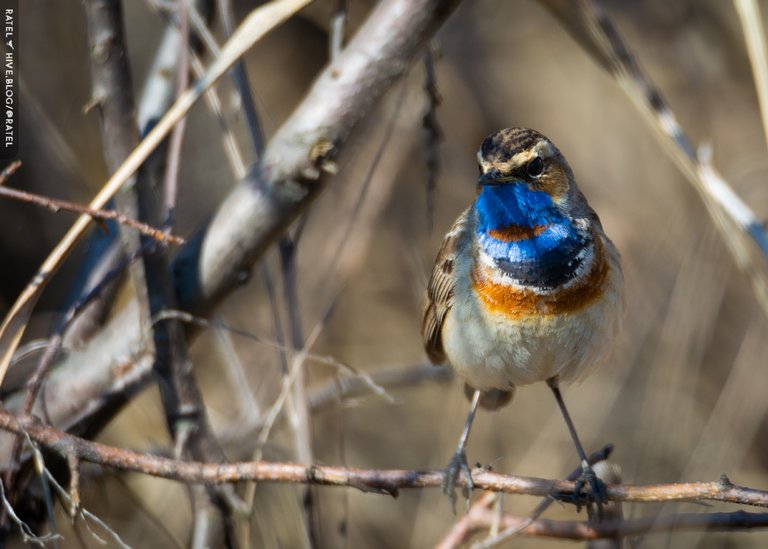
🦉 The bluethroat (Luscinia svecica)
- Luscinia (lat.) Nightingale
- svecica suecicus (lat.) Swedish; the name svecica, according to the history of the description, is not a toponym, but is given for the color of the male's chest:
Olof Rudbeck junior, Swedish botanist and birdwatcher, mentor to Carl Linnaeus, having discovered the bluethroat in 1695 in Lapland, he gave it the name Avis Carolina in honor of the Swedish king Charles XI and the blue-yellow Swedish flag (in those days the yellow color on the flag was more reddish), and K. Linnaeus in 1758, when the absolute power of the monarchy in Sweden was no longer, considered the name svecica more correct than carolina (Jobling, 2010)

Every year at the end of April I go to visit my relatives in a neighboring region. This city is surrounded by steppe and has no large forests. In these steppes I love to walk and visit these colorful nightingales. It is in these places that they first settle when they arrive from wintering grounds.

In my region, these birds appear only after a week or even two.
Beautiful, elegant males spend all their time mating. they sing loudly while sitting in the bushes, sometimes flying up and then smoothly hovering down.
Surprisingly, I met females extremely rarely; they are unusually secretive.

| Camera | Lens |
|---|---|
| Nikon D5200 | Tamron SP AF 150-600mm f/5-6.3 Di VC USD |
